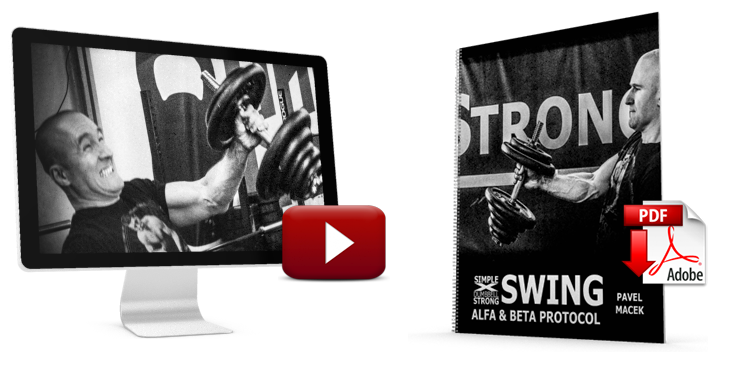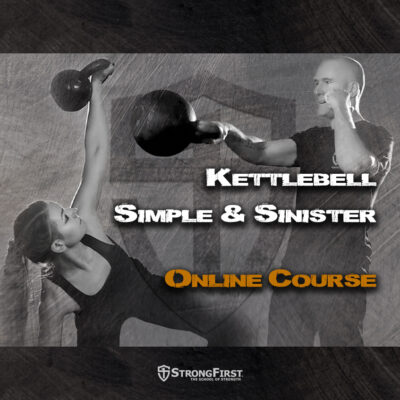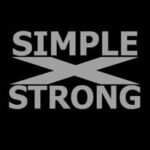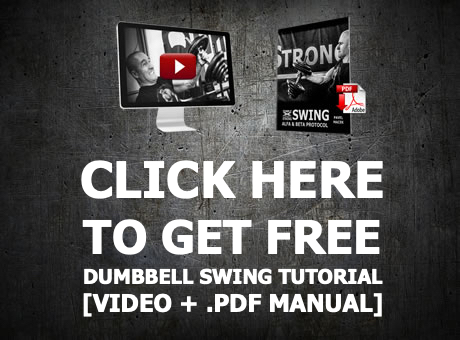The experienced trainer will readily admit that non-apparatus training must play a vital part in any well-balanced routine, whether in the remedial, fitness, or advanced strength degrees of exercise.
Certain forms of non-apparatus work are unique in this respect and cannot be duplicated by any form of apparatus training, and into this category must come the important abdominal isolations, scapula mobilization, spinal and breathing controls, etc.
Even the mechanical muscular contractions produced by apparatus resistance can be made more effective by a conscious effort to intensify the power and attain peak contraction by concentration.
Bodyweight and Leverage
The branch of non-apparatus training which most nearly approaches weight-training is that of bodyweight resistance and leverage. Bodyweight alone is insufficient as a means of resistance in the advanced degrees, and leverage then becomes the medium by which profitable work can be provided or even the exceptionally strong. Maxick, that world-famed exponent of every kind of strength and agility, employed certain “impossible” leverage feats in his non-apparatus training and stated that some of these required more strength and concentration that his feats with the weights, including the Two Hands Jerk of two and a quarter times his body-weight.
Sigmund Klein of America, and our own “Bill” Hunt of Darwen, were both great pressers of heavy weights who advocated Herculean Balancing as a means of training for overhead lifting. More recently the phenomenal Doug Hepburn, reckoned by many to be “World’s Strongest Man,” recommended “Head-Stand Press-Ups” as splendid training for the Press, and who should know better than this superman?
That ancient adage of the circus ring which exhorted the acrobats and gymnasts to “Use the arms as legs and they will become as strong as legs,” has been confirmed by a large number of modern muscle men and “lifters” who owe a great deal of their development to non-apparatus work of this kind.

EXERCISE ONE
W. J. HUNT, the famous strongman, Maxalding Cup winner, and weightlifting record-holder shows exercise one – the HEADSTAND PRESS.
Take head up balance as shown in left hand figure. Take full inhalation and press up to the stretched arm position. Regain the headstand position and repeat.
No Limit to Progression
There can be no doubt whatever that progression in this form of training is limitless and there are always some advanced feats which can only be mastered by the very few. Exercises for arms and shoulder work can be continued to the stage where they provide maximum effort even for
men of World Class strength. The question of non-apparatus work for the legs may present a rather different problem and some bodybuilders will doubt whether an equivalent amount of leg work can be attained without the use of a lot of mechanical apparatus resistance.
Harry B. Paschall, the creator of “Bosco” and one of the most vehement propagandists for heavy weight-lifting, has given us a good lead on non-apparatus leg training by his serious statement that “The legs of ballet dancers are unexcelled.” He particularly advocates movements from the Cossack Dance as being of great value in leg training.
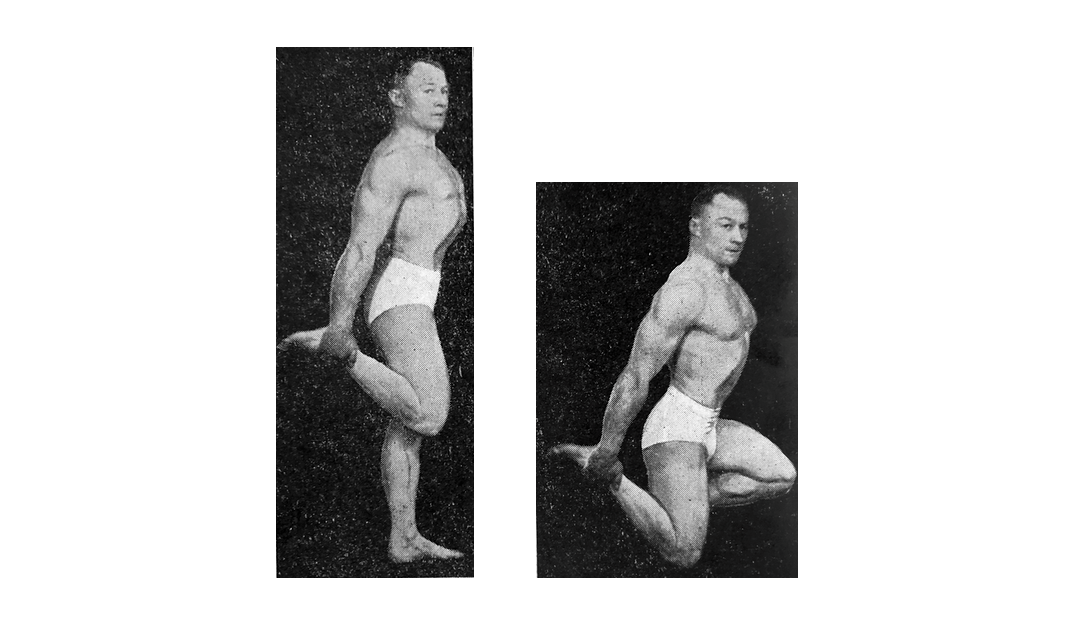
EXERCISE TWO: SINGLE LEG SQUAT
ERNEST ALLEN, Maxalding Medallist and noted competitor in International and National Physique Competitions, shows this fine leg developer exercise. Grasp right ankle with right hand. Bend the left leg until right knee touches the floor as shown in second illustration. Straighten the left leg with a steady motion. Complete full repetitions on left leg before performing with the right. The heel of the supporting foot should be raised as the body is lowered.
My own personal experience in support of this theory is a long one, and I recall a visit to the backstage of the Golders Green Hippodrome in company with my father and Edward Aston (then Britain’s Strongest Man) to meet a Russian dancer who possessed a most astounding leg development. I remember my father and Aston agreeing that they had never seen anything like the bulk or detail of this man’s thighs, and when tested, his strength was proportionate. He apparently did no other exercise other than the strenuous Russian Dance routine! The Cossack Dance involves some rather boisterous leaps and leg thrusts in the squatting position and may not be quite suitable for indoor training at home, but there are other movements which employ the legs just as powerfully, although in a slower and quieter way.
Norman Scott (the current Mr. Dublin), asked me to train with him without apparatus as an experiment. He did this with a completely open mind and had previously trained with weights.
His overall progress was steady from the beginning and he became bigger and heavier than ever before, but what particularly surprised him was the increase in the thigh bulk which he admitted he thought to be impossible without any heavy squatting with weights. Incidentally, when he did return to his weights, he found that he was stronger than ever before. I have scores of similar cases in my files and even the most advanced weight-trainers can gain additional benefit from non-apparatus work when this is properly applied. There are trainers who believe that for arm and shoulder development Herculean Balancing is in some respects superior to overhead lifting. They claim that the effort is isolated to the parts concerned, while other parts remain inactive. For overhead lifting, the legs and postural muscles are employed vigorously and take the first call on the blood supply.

EXERCISE 3 – and if you think non-apparatus work is easy you are in for a shock!
Assume the prone position shown in top picture. With a steady downward pressure lift the body into the position shown in centre picture. Lower slowly and repeat. If two pieces of stiff cardboard are placed under the hands to facilitate sliding it is possible to continue the lift into the position shown in the lower illustration. But the important part of the exercise is the original lift to the position shown in the centre picture. Exerciser, Ernest Allen. One of the best pectoralis exercises you’ve ever seen!
When the “upside-down” position is assumed the blood is concentrated in the arms and shoulders by the force of gravity as well as by the effort involved.
But before these more advanced stages of non-apparatus training can be successfully employed, there must always be the preliminary and intermediate preparation, which include the basic hand-balancing positions.
A fairly advanced Test Set of non-apparatus exercises is given here so that the bodybuilder who has reached a reasonably advanced stage of training can prove to himself that there is much to be gained from this work.
Even the most ardent heavy-apparatus man can use his muscular system to the limits of its powers when he is removed from his weights, squat racks, etc., by circumstances such as National Service, traveling, conditions at home demanding silence, etc., and if weight trainers reading this are inclined to doubt the powerful effects of these exercises, then I would earnestly suggest that they try them. They will then have a very different opinion! Also, I wish to reiterate that these are not the most advanced non-apparatus exercises.
Two of the exercises given here require a mastery of the basic hand balancing positions to be performed effectively, but if the performer is strong enough to use them and has not mastered the balances, he can use a wall to prevent overbalancing.

EXERCISE FOUR
A wonderful arm exercise-the Triceps Stretch or Tiger Bend or forearm balance to long-arm. From this position shown press slowly up to full stretch position of Exercise One. Return to first position and repeat. Exerciser, W. J. HUNT.
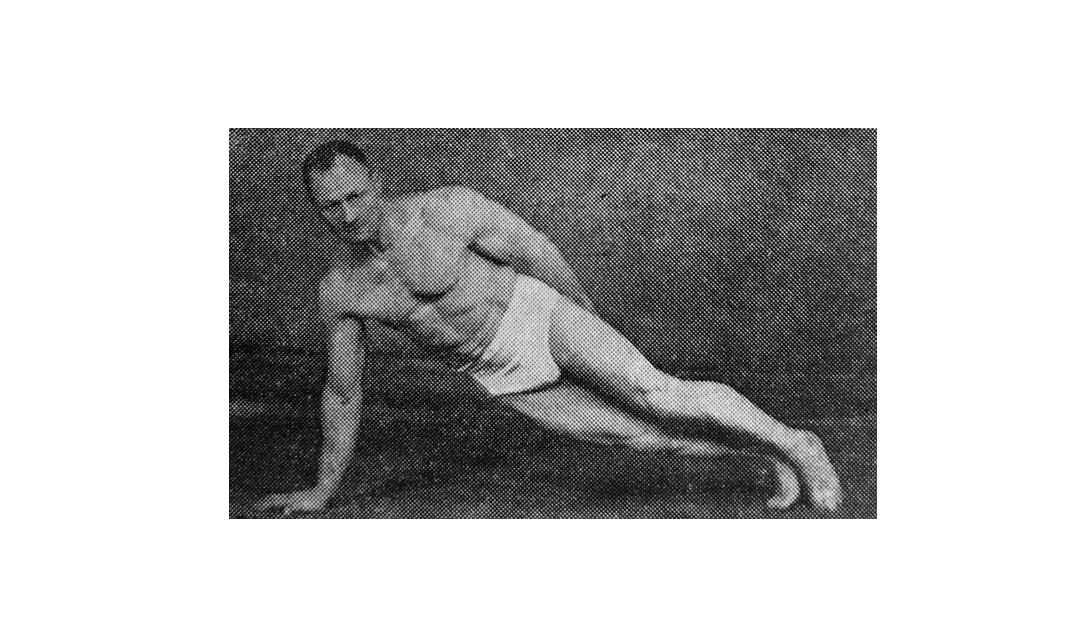
EXERCISE FIVE
SINGLE ARM PRESS. From the position shown bend the supporting arm as fully as you can. Straighten it and repeat. Perform full repetitions with one arm before exercising the other. A more general bodybuilding movement can be made of this by turning the body towards the arm so that when the arm is bent it allows the nose to touch the ground.
SCHEDULE OF ADVANCED NON-APPARATUS TRAINING
- (1)–Two-Hand Press (Head-Stand to Long Arm).
- (2)-Squat (Single Leg-Ankle Grasp).
- (3)–Lateral Raise (Prone lying position.)
- (4)–Triceps Strength (Forearm Balance to Long Arm).
- (5)–Single Arm Press.
- “COURT SALDO Principal of MAXALDING introduces the tough muscle building work of ADVANCED NON-APPARATUS TRAINING”, in: Health & Strength Annual, 1955, p. 21-27.
MAKE SURE TO CHECK OUT THE STRONGFIRST BODYWEIGHT COURSES AND SFB BODYWEIGHT CERTIFICATIONS!
[ONLINE INSTRUCTIONAL COURSE] The Great Gama Protocol (GGP)
A simple, time tested “youth-restoring calisthenics” routine of ancient Indian and Chinese martial arts masters.
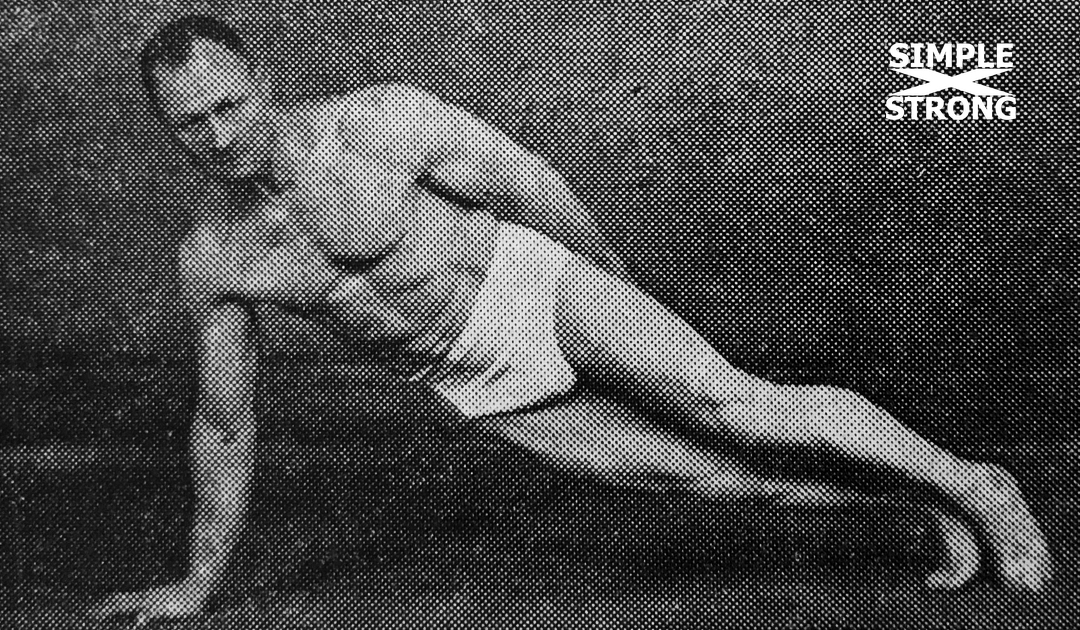


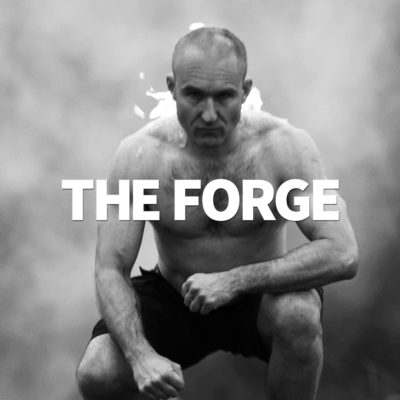
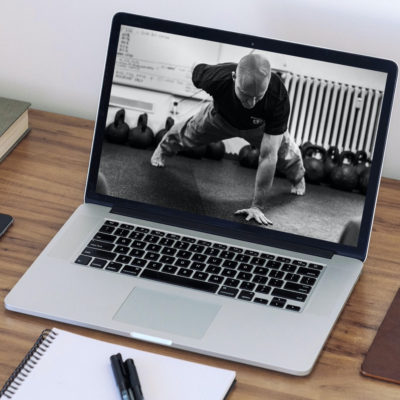

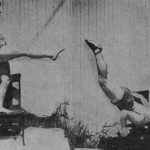
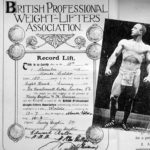

![Daily Exercises and Home Development [1922]: Part 2 – Dipping + Chinning the Bar](https://simplexstrong.com/wp-content/uploads/2021/05/daily-exercise-and-home-development-dipping-150x150.jpg)
